How to make a magnetic marble run for your refrigerator door. Fun STEM (or STEAM) activity for kids!
Suitable for
You can adapt this activity to suit preschoolers, kindergarteners or young school-aged kids. My daughters Jewel and Bumble Bee were 6 and 4 years old when we first made this.
We made this fridge-door marble run ages ago, but I’m only just getting a chance to share it now, because, you know, kids and life and stuff…
It was lots of fun, and super simple to make.
How to make a Fridge-Door Marble Run
We used:
- Cardboard tubes in different lengths & diameters (we used a variety of toilet paper rolls, paper towel rolls, foil / cling film rolls)
- Decorative tape (aka washi tape)
- Magnetic sheet
- Scissors
- Hot Glue Gun or strong UHT glue
- Various little balls (marbles, pom poms etc) to test it out!
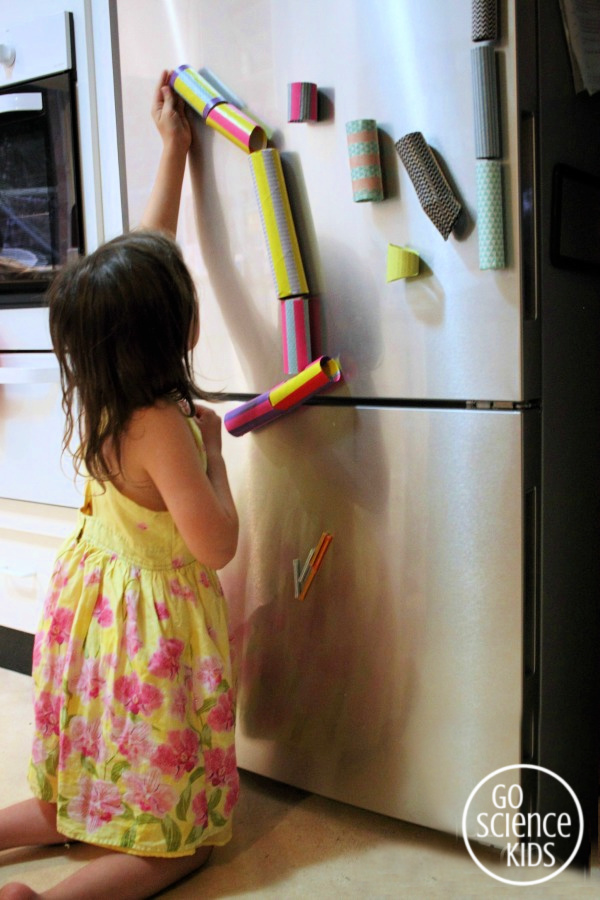
Of course, you could make this with plain cardboard rolls, but decorating them with washi tape is fun, and much prettier!
I used a hot glue gun to stick magnets onto the side of our tubes (mainly because the results are quick, and I’m impatient!). You could also use regular PVA craft glue, and just wait overnight for it to dry. If you use self-adhesive magnets, you may have to add extra glue between the cardboard tube and the magnet so they stick ‘properly’.
Stronger magnets are best, especially if you plan to use heavier balls, like marbles or steel balls, as they have more force behind them. If you’re only planning on using pompoms, then you could get away with weaker magnets (like the promotional ones you sometimes get in your letter box).

My daughters (Bumble Bee, 4.5 years old and Jewel, almost 7 years old) helped decorate a few of our cardboard tubes, and I finished the rest. Stripes are easy and look great!
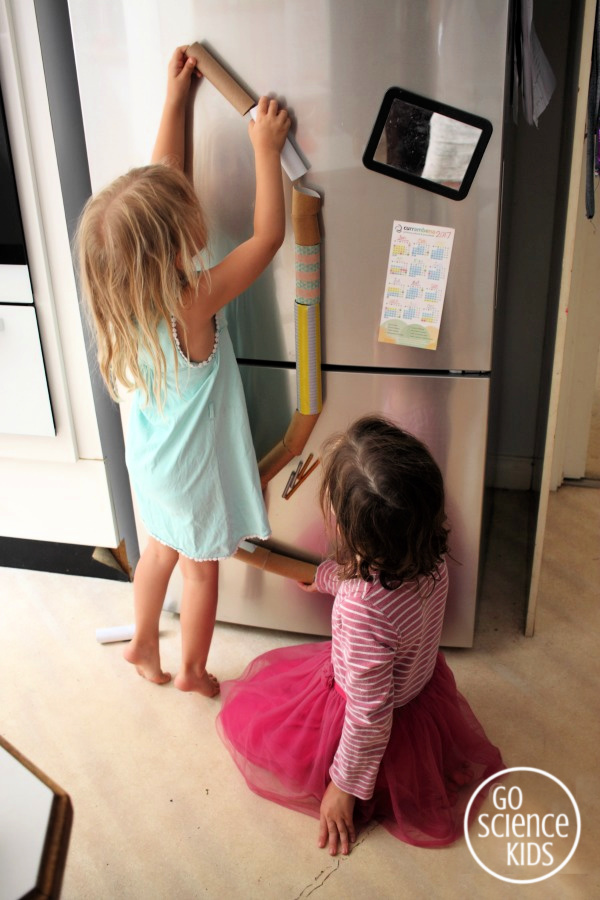
We created some shape variations by cutting an angle in the end of some of the cylinders, or by cutting a small section out of the side of another. (These variations are great to have later, when the kids are trying out different marble run designs.)
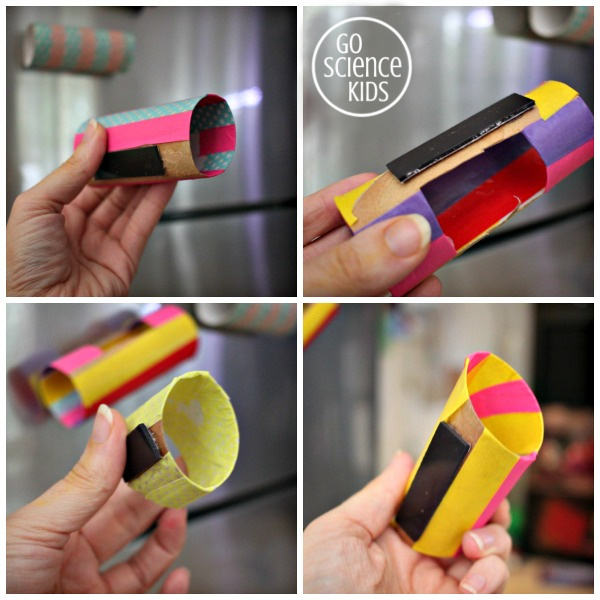 Once you’re done creating and decorating your tubes, pop them on the fridge, and wait for the kids to come and play! (I *might* have played with them a wee bit too. It’s fun!)
Once you’re done creating and decorating your tubes, pop them on the fridge, and wait for the kids to come and play! (I *might* have played with them a wee bit too. It’s fun!)
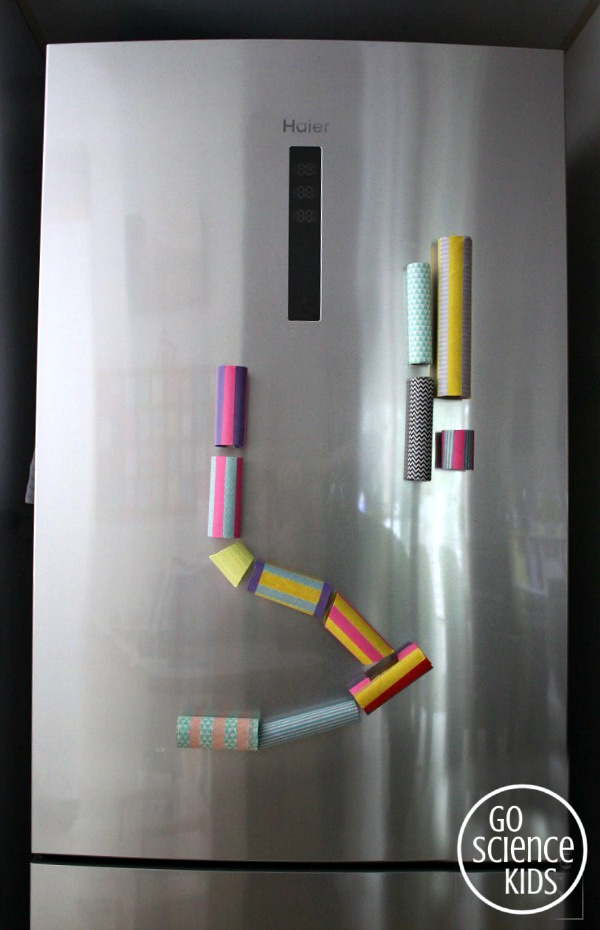
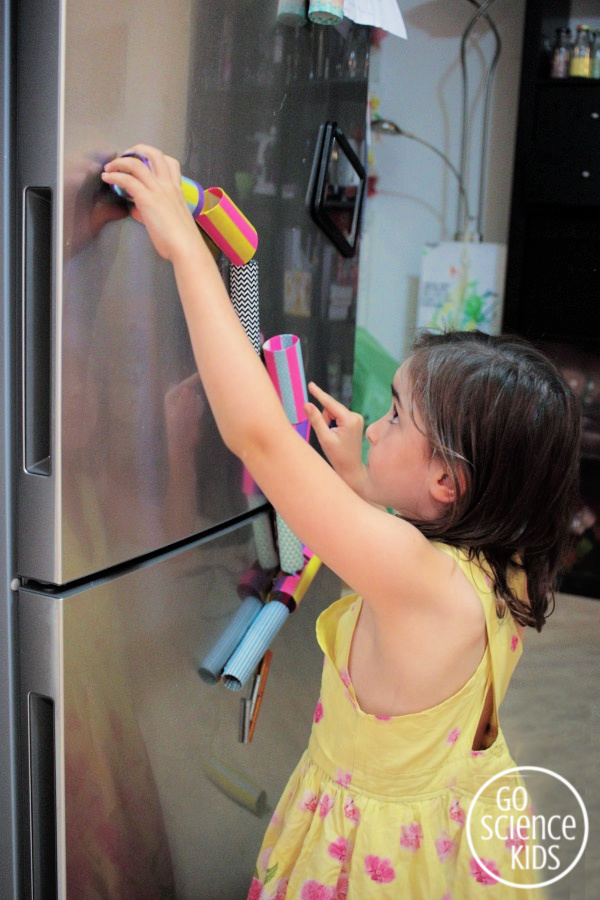
Some questions to ponder:
- How many zig zags can you incorporate into your design?
- Use a stopwatch to time your marble run. Can you modify your track to make it quicker? Slower?
- Test your marble run using a heavier smooth ball (eg a marble) vs a lighter rough ball (eg a pom pom). Do you need to modify your design to suit the ball type? How does the type of ball affect the speed?
- How far does your ball roll when it comes out of the end of marble run? Can you modify your design to get the ball to land in a particular spot?
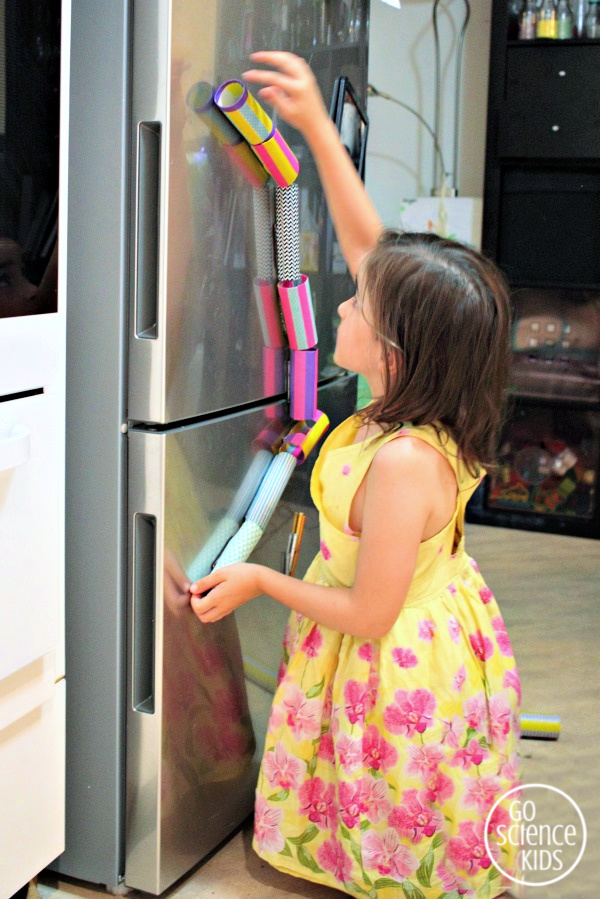
Fun Science
There’s a number of factors that influence your marble run design.
The first is gravity. Gravity is the force that pulls objects downwards (towards the centre of the earth). It’s what causes the marble to roll downwards.
The second is energy (and conservation of energy). The faster an object is moving, the more energy it possesses. When objects collide, energy can be transferred from one object to another, changing their motion. When a ball hits a zigzag in the marble run, the energy is transferred from the ball to the marble run wall, and then back into the ball, causing the ball to change direction.
The third is force (and the relationship between energy and force). The faster and heavier an object, the more force it will have. Heavier balls will require a slower track (or stronger magnets), else the force of the ball will push the track out.
The fourth is friction. Friction occurs when two objects rub against each other (slowing movement and creating heat in the process). The texture of the ball and/or the track will affect the friction.
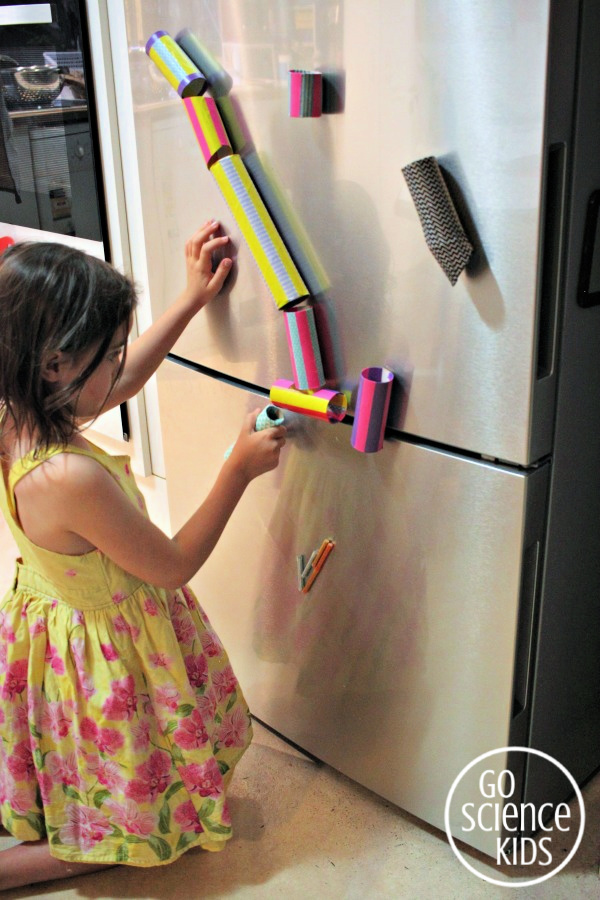
Science isn’t the only subject that can be introduced here. You could easily turn this into a playful STEM or STEAM (STEM + art) activity:
- Science – see above! Marble runs are a classic physics activity covering gravity, energy, force and friction.
- Technology – You could use a digital stop watch to time the marble run.
- Engineering – taking in the various forces into account, testing and making design modifications are all classic engineering activities.
- Math – estimating, measuring and comparing times is all great maths practice. Likewise, estimating, measuring and comparing how far the marble will roll. You could record results in a table.
- + Art – decorating your tubes! We used washi tape, but you could also paint the cardboard tubes or draw patterns using markers…
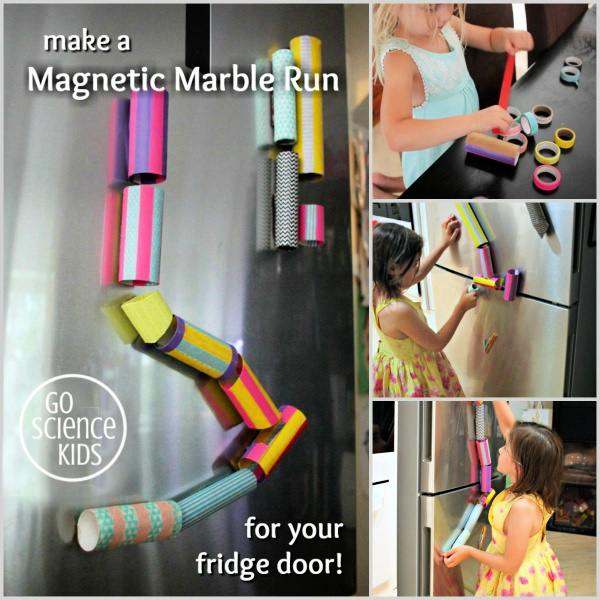
For more physics fun, check out our Physics Experiments for Kids archives, including:
- how to make an easy upcycled catapult, great for younger kids
- or how to make a slightly more complicated craft stick catapult, which is fun for older kids to try
- or perhaps try making a loungeroom staircase pulley?
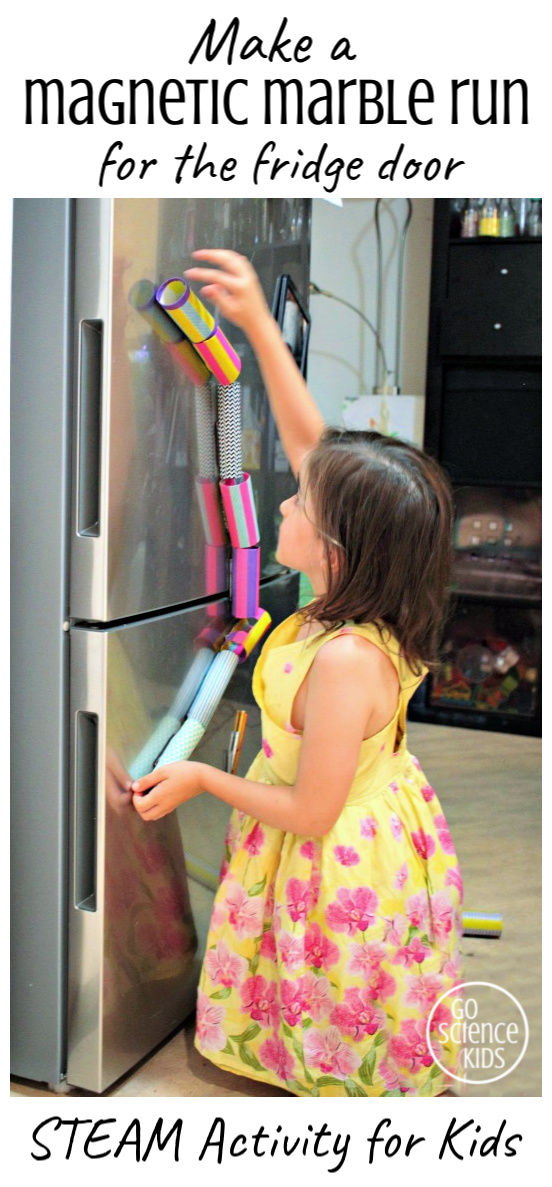
You might also like to follow our Go Science Kids and Fun Science for Kids boards on Pinterest.
And, of course, you can always subscribe to our newsletter, to receive all our latest activities straight in your Inbox. We’d love to have you join us!
* This post contains affiliate link(s) to similar products used. An affiliate link means I may earn a referral fee or commission if you make a purchase through my link, without any extra cost to you. It helps to keep this little blog afloat. Thank you so much for your support.

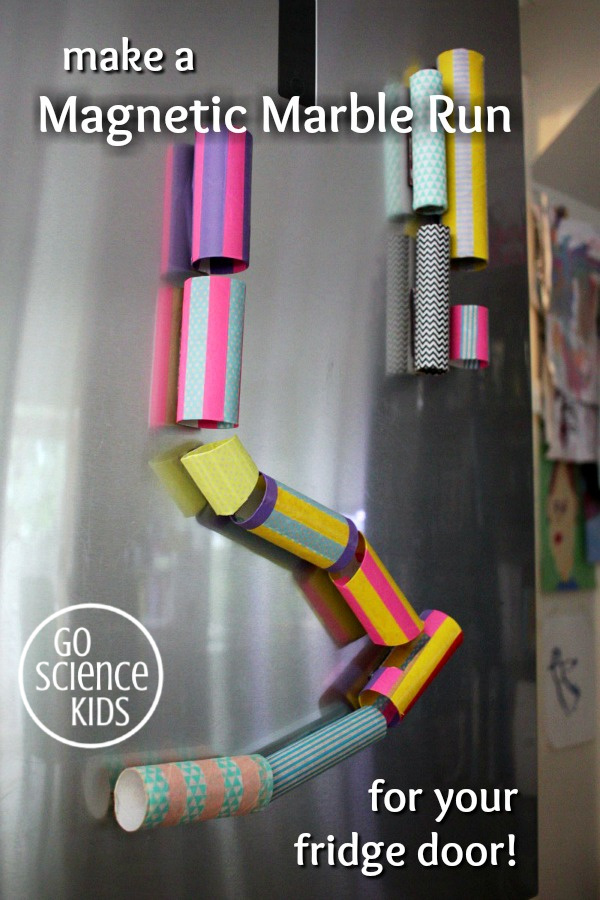 contains affiliate links* to similar products
contains affiliate links* to similar products
#
#
#
#